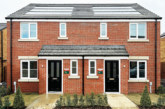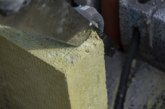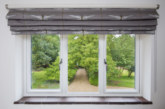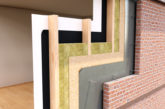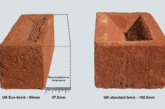Simon Storer, Chief Executive of the IMA argues that well-insulated new-build properties will go some way to meeting our net zero climate change targets, but only if the insulation offers all-round performance characteristics and is correctly fitted in the first place.
The latest report from the Committee on Climate Change (CCC) “Net Zero: The UK’s contribution to stopping global warming” stressed the importance of tackling the inefficiency of new and existing building stock. Good insulation is essential if homes and buildings in the UK are to become more energy efficient and sustainable and off-set some of the increasing energy costs and climate change effects. A thermally insulated building envelope installed correctly will achieve high performance, low maintenance, reduced energy bills and will improve long-term energy efficiency.
The thermal performance of a building envelope makes a significant contribution to reducing the overall building energy usage – so tighter U-values in walls, floors and roofs will help to deliver the standards required. To achieve this, PIR and PUR insulation offers a highly effective solution, achieving excellent levels of thermal performance. It’s versatility is testament to the fact that this insulation is available as boards and blocks, cavity injected, composite panels as well as a spray and panel insulation.
Utilising the very high levels of thermal efficiency that PIR provides can mean the difference between a building’s success or failure and the growing popularity of rigid PIR insulation throughout Europe, demonstrates how designers can achieve the highest insulation values from the minimum thickness of material.
With lambda values as low as 0.021 W/mK, PIR insulation performance can be achieved with less thickness than other commonly used insulation materials. It has become increasingly popular on residential, commercial and refurbishment projects because of its exceptional insulating properties, high strength and light weight.
A high-quality building fabric
In order to meet the design values of a project, fabric insulation should be correctly fitted with appropriate attention paid to airtightness and cold bridging. Competency in installation is vital because when a high performing product such as PIR/PUR is installed incorrectly, it could compromise that performance. All contractors need to make sure that, not only the levels of site supervision are of a good standard, but the manufacturer’s installation instructions are followed and installation instructions around potential cold thermal bridges and awkward details are achieved. Eliminating poor installation will drastically reduce heat loss.
Once the high-quality building fabric has been completed there should be no need to worry about it. A fabric-first approach will enable specifiers to future-proof their designs which can be employed on projects of any size from the largest public building to the smallest domestic extension. A more energy efficient fabric from the outset can be upgraded later on through improved services, ventilation measures or the addition of renewable technologies.
While insulation clearly has the biggest role to play in improving the thermal performance of a building, fabric-first is about giving consideration to ensuring continuous insulation, minimising thermal bridging and achieving high levels of airtightness. Addressing these aspects of construction means the Building Regulation’s thermal targets can be met and those performance levels can be incorporated into the finished building’s performance targets.
Many insulation manufacturers are playing their part and are fully committed to supporting the journey towards meeting our net zero climate change targets. This is evidenced at both the individual company and at the trade body level, where initiatives, such as good practice guides and practical advice are available to all stakeholders to ensure that when PIR/PUR materials are used the theoretical performance is translated into reality on site.
To achieve more thermally-efficient building envelopes as well as comfortable buildings, we must have a fabric-first approach, which includes insulation such as high-performance PIR. Ultimately, the ‘fabric-first’ approach will remain the most direct route to achieving the net zero target as well as compliance with the energy performance requirements of Building Regulations. When a structure is built correctly in the first place it will continue to perform as intended for many years to come.


